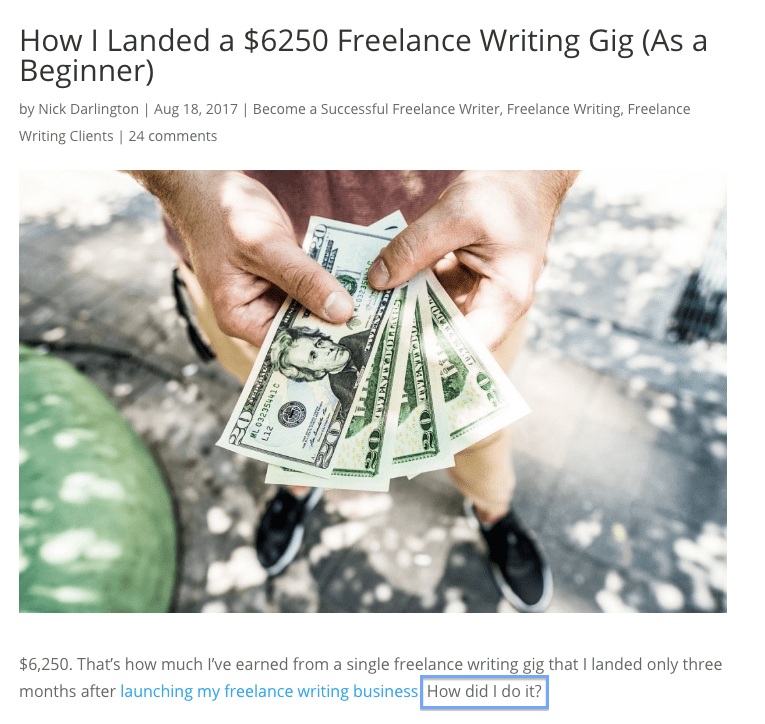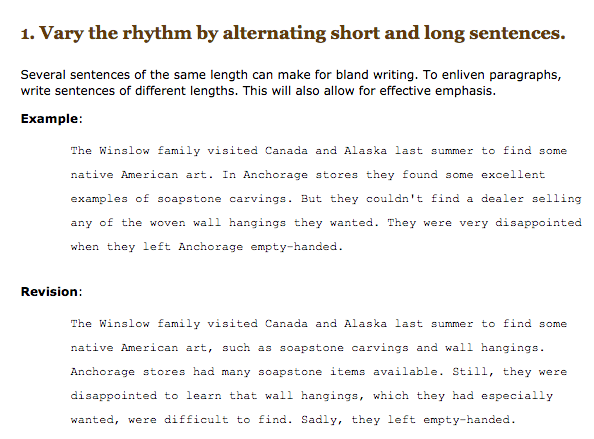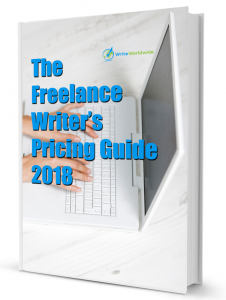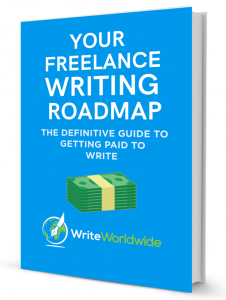Do you feel that your blog posts are boring? Here’s a few simple tricks that will breathe life into your copy, and help you write better blog posts.
You’ve chosen your blog post topic and decided on a killer headline. Check.
You’ve completed hours of research and written draft one. Check.
You’ve then rewritten, edited and made final touch-ups. Check.
All the hard work has paid off, and you have the perfect post, or so you think…
As you go over the final draft, you see that your content has plenty of useful information but, the more you read it, the more you realise it’s boring and lacks personality and flow.
You know what your problem is, but you have no clue how to fix it. You’re stuck. And you remain stuck with each new post you produce.
You yearn for the ability to write like your favourite blogger. You know, the one who has an uncanny ability to tell stories and keep you captivated?
Their words flow like a stream, with twists and turns at every corner. They effortlessly guide you from one idea to the next. And, before you know it you’ve read the entire post without blinking.
Yes, these writers are gifted, but I guarantee you that you can write with the same flair. It just takes practice. How do you think they are able to write as they do? It certainly didn’t happen overnight.
In this post, we show you how to make your posts more exciting so that readers will remain glued to their screens.
Let’s dive in.
1. Lead with a Powerful Hook
It doesn’t matter how remarkable your headlines is, without a hook, you’ve lost your readers. The purpose of a hook is to grab your reader’s attention, so they keep reading.
Hooks are crucial whether you’re writing for an offline or online audience. But they’re especially important for online readers who are bombarded with so information online. It’s no surprise that the majority of them scan content online
A study by Jakob Nielsen confirms this, highlighting that 79% of online readers are scanners. The implications of the study are that if you fail to grab their attention, you’ll lose them and they’ll simply move on to someone who can.
So, how can you hook your readers? Here are several ways:
Ask a Question
Brian Clark of Copyblogger wrote a post about opening your blog posts with a bang. In that post the opening line was:
“What’s the second most important part of your blog post after the title?”
That questions evokes curiosity and encourages you to read on. It’s a simple, yet powerful method to grab your reader.
It’s a method used in several posts on WriteWorldwide. For example look at the opening few sentences of the post I wrote about landing a $6250 writing gig as a beginner:

Or the opening liner of the post about nine websites that will help you become a freelance writer:

If you want to deepen the connection with your readers even further, ask a question that taps into a problem. By doing that you show you understand your readers’ problems and that you’re empathetic.
You’ll connect with them because they’ll feel that you’ve written the post especially for them and that the content in the post will solve their problem.
A perfect example of this is the post by Jon Morrow where he starts with this question:
“Ever feel like all of the “good” topics in your niche have already been worn out by more popular blogs?”
I did the same in the opening sentence of this exact post:

If these questions resonate with you, you can’t help but continue reading. In your mind, you’re thinking, “Yes that’s me; I can totally relate!”
Use Bucket Brigades
Bucket Brigades may be an entirely new concept for you. I know they were for me.
I learned about them recently after coming across a post written by Brian Dean from Backlinko.
Bucket Brigades are a tactic copywriters originally used to keep people reading sales letters. But you can apply the principles to online writing too.
These are short phrases that keep readers glued to your page. For example, have a look at the opening of the post I wrote about writing blog posts your clients will love:

In fact, you can use bucket brigades throughout your blog posts to keep readers hooked. That’s exactly what Brian did.
By using the technique, Brian has increased the average time on Backlinks pages to over 4 minutes.
2. Become a Master of Flow
Flow is something that moves naturally and effortlessly. Some writers are naturally more gifted than others and write with impeccable flow.
But that doesn’t mean that you can’t learn how to write with flow. In fact, there are a few ways you can start improving it right now.
Let’s have a look.
Leverage the Power of Transitional Words
These are words that help you move from idea to idea, sentence to sentence and paragraph to paragraph. Here’s a few examples:
Transitional words to join sentences:
- And
- But
- However
- Because
- Rather
- In contrast
Transitional questions or phrases that lead into new sections:
- Let’s get started?
- Let’s dig in
- Sound good?
- Sound familiar
- Let’s have a look
Transitional phrases that join paragraphs:
- More importantly
- Even worse
- Let me explain
- Beyond that
- Conversely
- Furthermore
If you want to explore transitional words in more detail, read Henneke Duistermaat’s post: Distracted Readers? Use these 6 Transition Tricks for a Smooth Reading Experience.
She discusses word connectors, pronouns and the “Industrial Strength Lubricant”. Industrial strength lubricants – also known as seductive subheads – need to entice the reader to continue reading.
But on their own transitions aren’t enough.
Guide Readers from the Familiar to the Complex
“The real secret to flow is about guiding readers from what they already know to where you want to go”, says David Lipscombe in a Youtube Video.
He shares an excellent example: Imagine you read an article about allergies – of which you know nothing – and you read this:

Confusing, right? If you readers have to stop and think about what they’re reading, the chances are higher that they’ll leave your page.
With a small change to the above sentence David shows us how we can guide the reader:

Much better, right? With a simpler sentence your readers don’t feel lost, and they’ll hang around longer.
** The award-winning writer, Steven Hall, wrote this last sentence.
Get Readers to March to Your Drum Beat by Varying Sentence Length
If you use too many short sentences, your writing becomes choppy; it creates a robotic feel. Conversely, too many long sentences make writing hard to read.
You need to find a balance. Consider the below example by the Purdue Online Writing Lab:

I’m sure you’ll agree that the revision is much better. A method for analysing the flow of your posts is to read your posts out loud when editing. You’ll quickly pick up where sentences need variation.
3. Inject Personality into Your Content
Readers read your posts not only for the value they get but also because they connect with you and the way you write. Simply put: they enjoy your style.
That’s what keeps them captivated.
That’s why they’ll read your post over someone else’s even if you’re both offering the same information.
That’s why, for example, I read Bamidele Onibalusi’s blog posts over other bloggers who write about freelance writing.
And that’s why many will read this blog post over others.
But how do you achieve your own style? Here’s three ways.
Be Vulnerable: Share a Personal Experience
Blog posts that share a personal experience generate more engagement. Readers appreciate your honesty and that you’re willing to be vulnerable.
One of the best examples is the post by Jon Morrow titled How to Quit Your Job, Move to Paradise and Get Paid to Change the World.
The post inspires, provokes emotion, and makes you feel like you can achieve anything. Jon manages to instil these feelings simply by sharing his story.
Sprinkle Questions Throughout Your Post
People taking surveys on the street will ask you, “Can I have a minute?” or “How are you today?” You either stop or veer away. But, even if you breeze past them to get home, you feel compelled to answer.
A good friend asks questions. Even doctors ask questions, and when they do, it’s meant to help us out.
The point is this: we are hardwired to answer questions. It challenges us. It engages us.
So start asking questions in your post to engage readers. You’ll see I’ve sprinkled them throughout this post:
Here:

Here:

Here:
![]()
And here:

Have a Conversation with Your Readers
Writing online is about building connections with readers. It’s not about hard selling and talking at your audience. Those are techniques that apply to traditional marketing methods – such as television advertising – where the customer cannot engage.
But online, readers can engage with the conversation. “They get to talk as well… among themselves… to us… and about us”, says Nick Usborne. “This has a huge impact on how companies should pitch their products and services online. And that, in turn, has a huge impact on how we, as copywriters, use our craft.”
So the onus is on you to start a conversation with them. But how exactly do you do this? Here’s a few tips:
- Write as you speak. Include generous sprinkling of the words “you”, “you’re”, and “your” throughout your copy.
- Don’t be afraid to write in the first person and share an experience.
- Communicate ideas simply. Remember the example we shared about allergies? The sentence was rewritten to make it easier to understand.
- Use the BarStool Test – a name coined by direct response copywriter Paul Hollingshead. With the test, you ask yourself, “If I were having a beer with someone, would I speak like this?” If not, rewrite and revise your copy until you’re happy.
Of course though, as Nick Usborne also says you can’t suddenly use the tricks to pretend to sound conversational. You actually have to understand your audience and be authentic in your communication.
It will take time, especially if you’re not accustomed to writing conversationally. But the more you listen to your audience and practice, the better you’ll get.
And, your readers will start feeling like your equal because you’re not talking down to them. They’ll trust you and learn to love you!
Conclusion
You don’t have to feel stuck with content that feels dull. In fact, if you use the right techniques you can soon write with the same flair as your favourite online blogger. It just takes a little practice:
Focus on leading with a compelling hook by asking questions and using bucket brigades in your openings (and throughout your copy).
Become a master of flow by using transitional words, guiding your readers from the known to the unknown, and playing with sentence length.
Inject your personality into your writing by sharing an experience, infusing questions in your posts, and having a conversation with your readers.
Do that, and you’ll become unstuck and dramatically transform your copy. It may take time, but it’ll be well worth it. And who knows, maybe one day a blogger will look up to you in the same way you look up to your favourite blogger?
Are you ready to bring your copy to life?
P.S. Take things further by downloading our free guide which provides an in-depth look of how to create posts that your writing clients will actually love:




Hi Nick,
Thanks for this highly informative post.Your unique framing of ideas with backup facts isn’t only logical but convincing as well. It’s certainly true that as writers,we should up our game by consistently connecting with audiences to soar greater heights.We actually need to bring our copies into life.
Cheers,
Peter.
Hi Peter,
Thanks for your comment. It’s important that we focus on continuous improvement to move beyond mediocre content.
Cheers,
Nick
Well-written article Nick. On point! Keep writing.
Hi Caryl,
Thanks 🙂
Cheers,
Nick
I love this post, i read your blog lots of information.
And i want share your content to my facebook account.
Thank You
Hi Berita,
Thank you.
Cheers,
Nick
Hi Nick
so educative ,enough information.
Thank you sir
Hi Shinina,
You’re welcome.
Best,
Nick